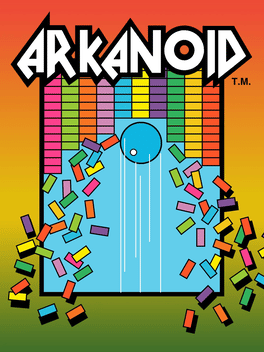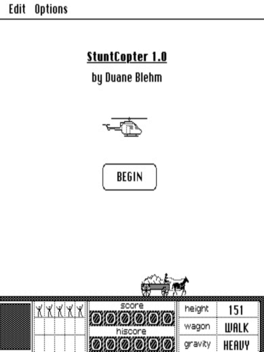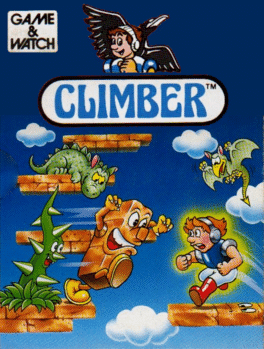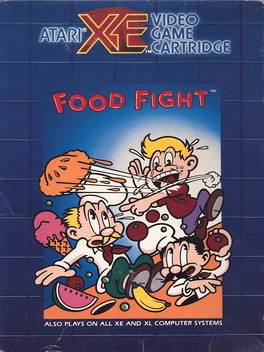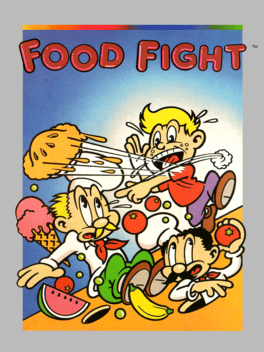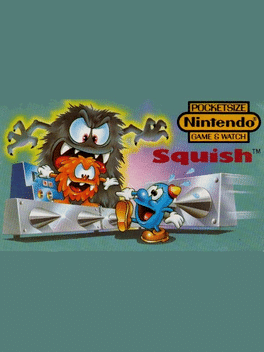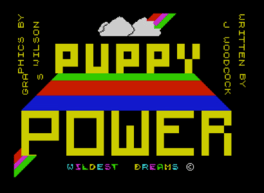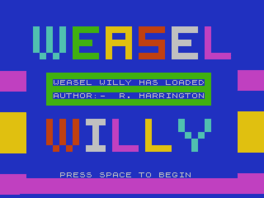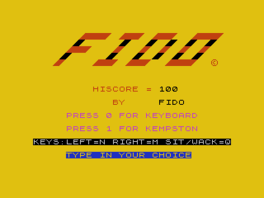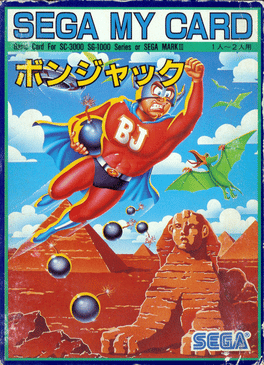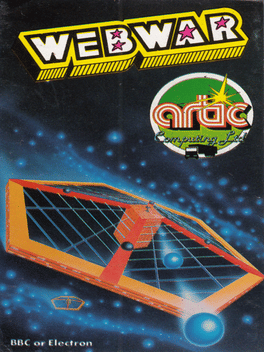Newest Arcade Games - Page 194
-
Arkanoid
1986
Arkanoid
1986
star 8.8The original Breakout concept involves controlling a bat at the bottom of the screen and using it to catch and direct a ball so as to hit all the bricks which are arranged at the top of the screen. It was unpopular for over a decade, before Taito revived it with some new ideas in this arcade game. The game's plot redefines the bat as a Vaus spaceship, the ball as an energy bolt, and the bricks form a mysterious wall stopping the ship from progressing to safety. By the mid-80s, power-ups were popular in most types of arcade games, and Arkanoid features them. They are caught by positioning the bat below them as they fall (meaning that you risk missing the ball if you go for them at the wrong time). The power-ups include lasers (which are mounted to each side of the ship and allow you to shoot out the blocks), a catching device (so as to be able to fire the ball off at a different angle every time you hit it) and one that slows the bolt down. -
Balloon Fight
1986
Balloon Fight
1986
Balloon Fight is a Crystal Screen and New Wide Screen Game & Watch game released in 1986 (CS) and 1988 (NWS). The game is similar to the NES classic Balloon Fight, particularly its Balloon Trip mode. The model number for the Crystal Screen version is BF-803, while the model number for the New Wide Screen version is BF-107. The BF in the model numbers stands for Balloon Fight. -
Stunt Copter
1986
-
Ghostbusters
1986
Ghostbusters
1986
Ghostbusters is an action game that features an overhead-view and a side-view. From Ghostbusters HQ, the player must monitor a map of midtown Manhattan for "ghost alarms", as well as for casual, roaming spirits, and plot a route to the alarmed area. Once the route is plotted, the player then controls the purchased Ghostmobile as it drives through traffic. Here, the player is able to capture casual ghosts on the way if they are en route. When the haunted location is reached, the game switches to a side-view. Two of the Ghostbusters will take position, activate their proton beams, and toss a trap to the ground. The player must then use the two Ghostbusters to attempt to lead the ghost(s) over the placed trap. Once activated, the trap springs to capture any ghosts directly above it. A successful capture will earn the player money, which can then be used to purchase new Ghostbusters vehicles and new modifications for it. An unsuccessful capture will see the ghost fly away (after nastily sliming one of the Ghostbusters) -
Thin Ice
1986
Thin Ice
1986
You play Duncan the penguin, who enjoys skating on thin ice-- especially around the other penguins. The goal of this game is exactly that; to skate around the other penguins, dunking them into the frigid water while consuming tasty shrimp cocktails (to make him go faster). Duncan has to watch out for the evil seal and polar bear, who both like to bat Duncan about! If you can manage to sink all the penguins, you move onto the next level-- where even more penguins await to be dunked. -
Climber
1986
Climber
1986
Climber is a Game & Watch video game released in the Crystal Screen format in 1986 and the New Wide Screen format in 1988. The game was never released in Japan, and an estimated 250,000 of the New Wide Screen version were produced by Nintendo. The model number for the Crystal Screen version is DR-802, while the model number for the New Wide Screen game is DR-106. Some speculate that the game is based on the Ice Climber NES game, though this is unconfirmed. In Climber, you are a child known as Climber who, with the help of Lord Meiji's teachings, jumps across platforms trying to get to the top of Block Mountain while avoiding enemies and platforms that move. The enemies are the Blockmen, which walk and turn into block platforms when they reach a gap; Eyerom, birds that fly and get in the Climber's way; and thorny plants, which are obstacles in the way of Climber's movements. In each set of 5 levels, the first 4 ends with a bonus game where Climber has 2 chances to time his jump to catch Hentori, the bonus bird. On -
Arkanoid
1986
Arkanoid
1986
star 8Arkanoid is an arcade game developed by Taito in 1986. It expanded upon Atari's Breakout games of the 1970s by adding power-ups, different types of bricks, and a variety of level layouts. The title refers to a doomed "mothership" from which the player's ship, the Vaus, escapes. -
Food Fight
1986
Food Fight
1986
You play as Charley trying to eat an ice cream cone. But first you must avoid the chefs that are out to get you: Angelo, Zorba, Oscar, and Jacques. Avoid the food thrown at you by the chefs to get the cone. You can also throw your own food at the chefs to slow them down. -
Food Fight
1986
Food Fight
1986
You play as Charley trying to eat an ice cream cone. But first you must avoid the chefs that are out to get you: Angelo, Zorba, Oscar, and Jacques. Avoid the food thrown at you by the chefs to get the cone. You can also throw your own food at the chefs to slow them down. -
Squish
1986
Squish
1986
Squish is a Multi Screen Game & Watch video game released in 1986 by Nintendo. The game was never released in Japan. A Pocketsize version of the game was also released. The unit's model number was MG-61. In the game, you have to avoid the platforms that are coming towards the player character, Ziggy the Mazeman. The game's name comes from the fact that you'll be "squished" if a platform hits you. The top screen contained game information, while all of the action took place on the bottom screen. This and Zelda were the only two games to have a format like this when it came to multi-screen games. -
Hottaaman no Chisoko Tanken
1986
Players get to dig up dirt beneath the surface, find keys behind four doors, and then find the door to the next level. The most obvious game to compare it to is Dig Dug, but without the boulders and with various devices like teleporting doors, speed, dynamite, and a wet suit. There are 15 levels in the entire game; which repeat themselves after the 15th level is finished. Lava can spew out at a vertical direction towards the player and kill him; it does not reset itself even after the players loses a life (but it does reset itself after a game over) Passwords are activated by pressing a certain button combination on the password screen. Several passwords results in cheat codes that does certain things; such as deactivating the lava in all levels of the game. Certain type of blocks are worth different points once they are dug up; ranging from common dirt to destructible blocks. The game features an instant death clause where players die in a single hit. Killed enemies reappear at the same location where they were -
Smile Pinball
1985
-
Fido 2: Puppy Power
1985
-
Weasel Willy
1985
-
Fido
1985
-
Necks Please...
1985
-
Bomb Jack
1985
Bomb Jack
1985
Bomb Jack is an arcade platform game that was released in 1984 by Tehkan (known today as Tecmo). It was followed by two official sequels, the console and computer title Mighty Bomb Jack, and the arcade game Bomb Jack Twin and Bomb Jack II, which was licensed for home computers only. The highest known score was by Mr G Jones from London: 6 746 800. Bomb Jack is a hero who can perform high jumps and float in the air. His goal is to collect all red bombs on the screen. The game's antagonists are enemies such as birds and mummies which, once they drop in the bottom of the screen, can morph into things like flying saucers and orbs that float around the screen, making Jack lose a life if he touches them. Collecting bombs will increase the bonus meter at the top of the screen (collecting lit bombs increases it more). When the meter is completely filled up, a circular bouncing "P" appears, and when collected, it will turn all the enemies into bonus coins for a short period during which Jack may collect them. Other similar -
Web War
1985
Web War
1985
A 3D vector graphics space shooter. To complete each sector of the Web you must initially destroy 20 aliens. The Web has 256 sectors to be cleared, and each will be marginally faster than the previous one. -
Orpheus
1985
Orpheus
1985
In the game the player must guide Orpheus across the raging river Stix to collect five golden harps. -
Sarge
1985
